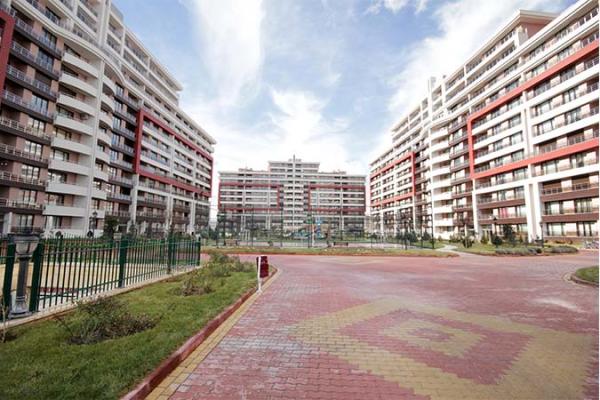17,650 new dwellings completed in Eastern region in 2016/17, only 2,690 are social housing, way below target to meet demand

17,650 new dwellings completed in Eastern region in 2016/17 of which only 2,690 are social housing units, way below target to meet demand new GMB London study shows
Population growth combined with the failure of the housebuilders and social housing providers to complete enough new homes has led to sky high house prices and ballooning private rents which are not sustainable says GMB London regionIn England, 148,000 new dwellings were completed in 2016/17 with only 18% (26,930) of those built for the social housing sector new GMB study shows.
In the Eastern region, out of 17,650 dwellings completed, 15.2% (2,690) were for the social housing sector.
There were 3,660 dwellings completed in Essex in 2016/17 of which 580 homes were in the social sector or 15.8% of the total completed. This puts Essex at the top of the league for new homes in the East of England.
Next comes Norfolk with 3,040 dwellings completed, 320 (10.5%) of which were in the social sector followed by Hertfordshire with 2,650 dwellings, 440 (16.6%) of which were in the social sector, Cambridgeshire with 2,390 dwellings, 430 (18%) in the social sector and Suffolk with 1,610 dwellings, 280 (17.4%) in the social sector.
Southend-on-Sea completed the least number of dwellings with 230, 90 (39.1%) being in the social sector, followed by Luton with 260 dwellings, only 10 of which were in the social sector, Thurrock completing 700 dwellings, 90 (12.9%) in the social sector, Peterborough with 770, 110 (14.3%) in the social sector and Bedford completing 950 dwellings, 160 (16.8%) in the social sector.
The table below shows total dwellings completed and dwellings completed by Housing Associations and Local Authorities ranked by total dwellings compiled by GMB London region, see notes to editors for sources and definitions.
|
Total dwellings completed in 2016/17 |
Dwellings completed in 2016/17 by Housing Associations and Local Authorities |
% of total |
||
|
Eastern |
17,650 |
2,690 |
15.2 |
|
|
rank |
||||
|
1 |
Essex |
3,660 |
580 |
15.8 |
|
2 |
Norfolk |
3,040 |
320 |
10.5 |
|
3 |
Hertfordshire |
2,650 |
440 |
16.6 |
|
4 |
Cambridgeshire |
2,390 |
430 |
18.0 |
|
5 |
Suffolk |
1,610 |
280 |
17.4 |
|
6 |
Central Bedfordshire UA |
1,390 |
180 |
12.9 |
|
7 |
Bedford UA |
950 |
160 |
16.8 |
|
8 |
Peterborough UA |
770 |
110 |
14.3 |
|
9 |
Thurrock UA |
700 |
90 |
12.9 |
|
10 |
Luton UA |
260 |
10 |
3.8 |
|
11 |
Southend-on-Sea UA |
230 |
90 |
39.1 |
Warren Kenny, GMB London regional secretary, said
"GMB Congress in 2014 called for the Government to set a target of 250,000 new homes per year of which 80,000 should be social housing with affordable rents, to meet the pent up demand for new homes across the country.
“These figures for all homes completed in 2016/17 are less than 60% of the target and social housing completions are less than 34% of the target.
“The figures for each area in the Eastern region are equally falling well below the numbers needed to meet pent up demand for new homes.
“The growth in the population in the region combined with the failure of the house building sector and social housing providers to complete enough new homes has led to sky high house prices and ballooning private rents. This is not sustainable.
“It is high time that Government enabled local councils to build council houses for rent. That is the only way that the social housing targets can be met. This is now a priority as it is the only way that the lower paid workers across the region can get more affordable housing. The Labour Parliamentary Party has to fight to get the Government to act on this.
“The decisions of the Thatcher government in the 1980’s to sell council housing stock, and not replace it, and to pay landlords housing benefit instead of providing social housing directly has been a huge and expensive mistake.
“Last year, for example, £24 billion was spent on housing benefit, with much of this public money ending up untaxed in bank accounts in offshore tax havens. If a fraction of that amount had been spent on building social housing for rent, the strain on the tax payer would be less and people would have housing they can afford to live in.
“These mistakes need to be corrected and corrected quickly."
ENDS
Contact: Gary Doolan on 07590 262 504; Richard O’Leary on 07710 631347; GMB London Press Office on 0208 457 4143
Notes to editors:
1) Source: Table 253 Housebuilding: permanent dwellings started and completed, by tenure and district, 2016-17; Department for Communities and Local Government
2) In principle, a dwelling is regarded as completed when it becomes ready for occupation or when a completion certificate is issued whether it is in fact occupied or not. The figures are for new build dwellings only, they are not net gain figures as they do not take into account number of social housing units demolished.
3) A dwelling is a single self-contained household space or two or more household spaces at the same address that are not self-contained but combined to form a shared dwelling that is self-contained. Examples are houses, bungalows, flats, maisonettes and bedsits.
4) Main points in GMB policy on Housing in report that was adopted by Congress 2014:
Using expensive private sector landlords funded by taxpayers to provide houses for rent needs to be phased out.
The country needs a target for new build homes of 250,000 per year plus a minimum of 30,000 empty homes brought back into use. At least 80,000 of the target need to be in the social housing sector. This cannot be done without a major programme of council house building.
GMB Congress called for strategic changes in policy to deliver this ambitious target as follows:
- All Housing Policy and resources for England focussed in one Whitehall Department
- A long Term Plan to switch over 20 year Government support from Housing Benefit to New Build and improvement
- Establishment of City Region level Housing Delivery Bodies with equivalent bodies in Devolved Administrations and for Rural Housing


